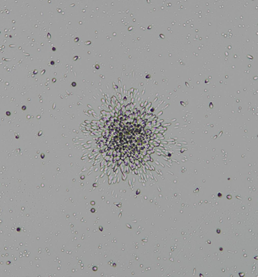Environmental Radionuclide Science & Engineering
Professor
- TAKAMIYA, Koichi e-mail:takamiya.koichi.2u <atmark > kyoto-u.ac.jp
* replace <atmark> with @
Building an effective and rational nuclear disaster prevention system
based on the dynamics of radioactive materials related to nuclear disasters
The accident at Fukushima Daiichi Nuclear Power Plant in March 2011 released large amounts of radioactive materials into the environment. By examining these radioactive substances in detail, insoluble particulate radioactive substances, which had not been expected at the time, has been discovered. In our laboratory, by investigating the generation mechanism of such radioactive particles and their state of existence and dynamics in the environment, we will study the various particles that are generated and exist in the environment, regardless of whether they are radioactive or not, in the global environment. For example, regarding the atomic bomb dropped on Hiroshima, we are trying to reconsider the impact of the atomic bomb by using the latest knowledge and technology to investigate how the radioactive materials produced after the explosion spread through the environment. Furthermore, based on the knowledge gained through research, we aim to construct basic data for a future rational nuclear disaster prevention system.
(1) Elucidation of the existence of particulate matter diffused into the environment due to atomic bomb and nuclear power plant accidents
We conduct research to explore the dynamics of radioactive materials and nuclear fuel materials in the environment through follow-up investigations of nuclear-related events such as the atomic bomb and the accident at the Fukushima Daiichi Nuclear Power Plant. We are particularly interested in radioactive substances that migrate through the environment in the form of fine particles, and although their properties are gradually becoming clearer, we still do not understand their dynamics in the environment or the production mechanism. In addition to using environmental samples collected in the field, we also try to investigate the generation mechanism by experimental simulation using the research reactor KUR (5 MW). Neutron activation analysis is a method that allows non-destructive element analysis in samples that exist in extremely small amounts. We are also progressing with research at a new test and research reactor that is planned to be built at the Monju Site in Fukui Prefecture in the future.
(2) Elucidation of material dynamics in the global environment mainly through particle analysis
Analyzing the properties of particulate radioactive materials uses a different approach from normal chemical analysis. In addition to direct observation using electron microscopes, we also use indirect observation methods using radiation. These technologies are also applied in the field of international nuclear security research, and we aim to contribute to such fields.
In addition, by expanding the range of target particles to include substances other than radioactive substances, it can also be applied to particles generated under high-temperature and high-pressure conditions that can occur in the terrestrial and space environments. For example, fine particulate ejecta produced by volcanic eruptions and microspherules coming from space are also subject to this research.
(3) Realization of a rational nuclear disaster prevention system by elucidating the dynamics of radioactive materials in the environment
Knowledge and technology obtained through research on the dynamics of radioactive particles will serve as a basic database to reduce health and environmental effects in the event of a nuclear disaster, contributing to the realization of a rational nuclear disaster prevention system.
Fig. Example of analysis of uranium microparticles by fission track method using research reactor.
Clusters of tracks generated by fission fragments which are produced by thermal neutron induced fission of U-235 are found on a detector.





